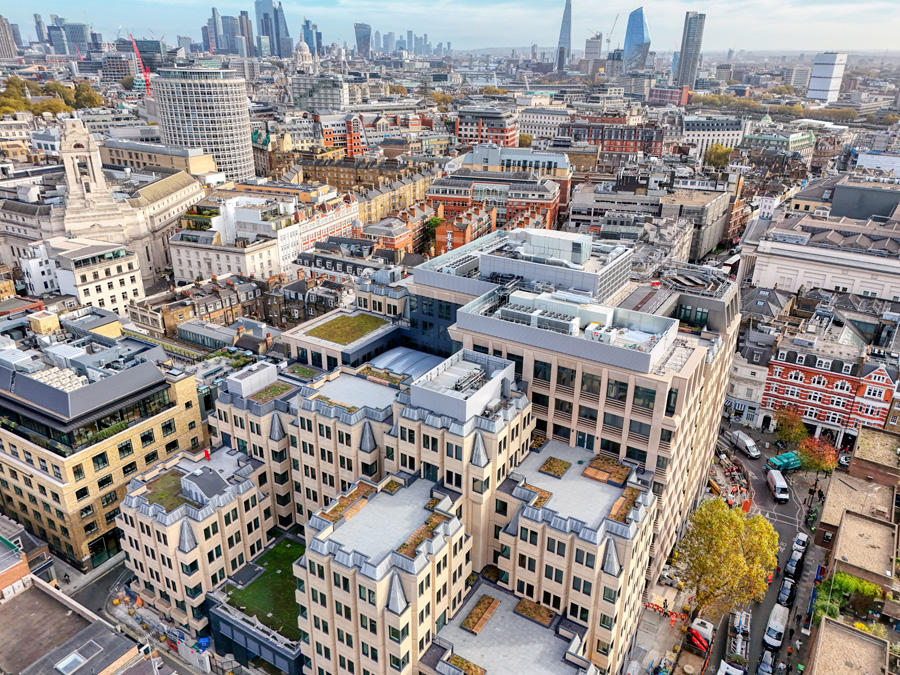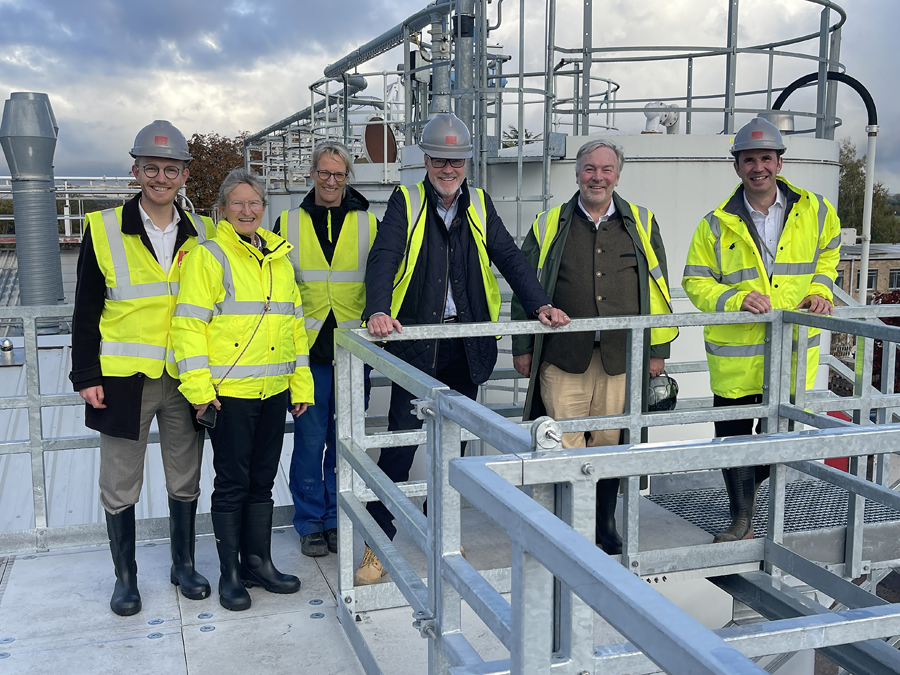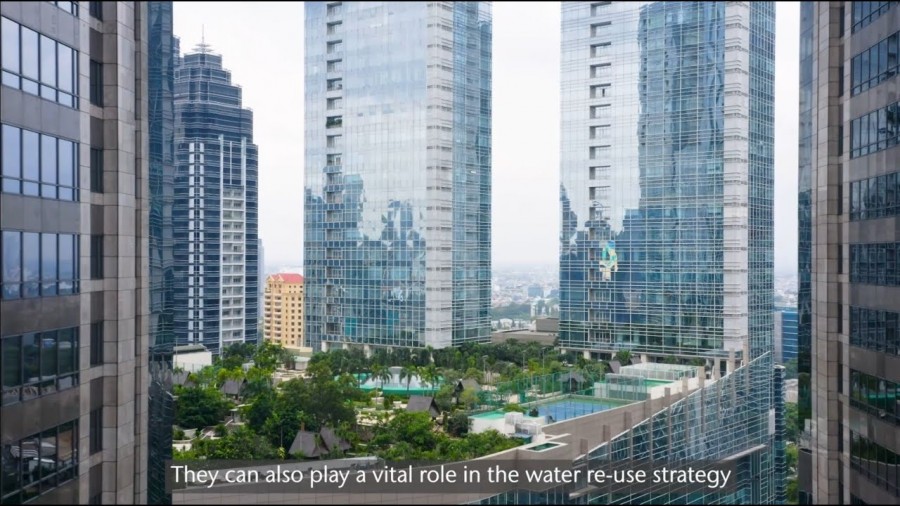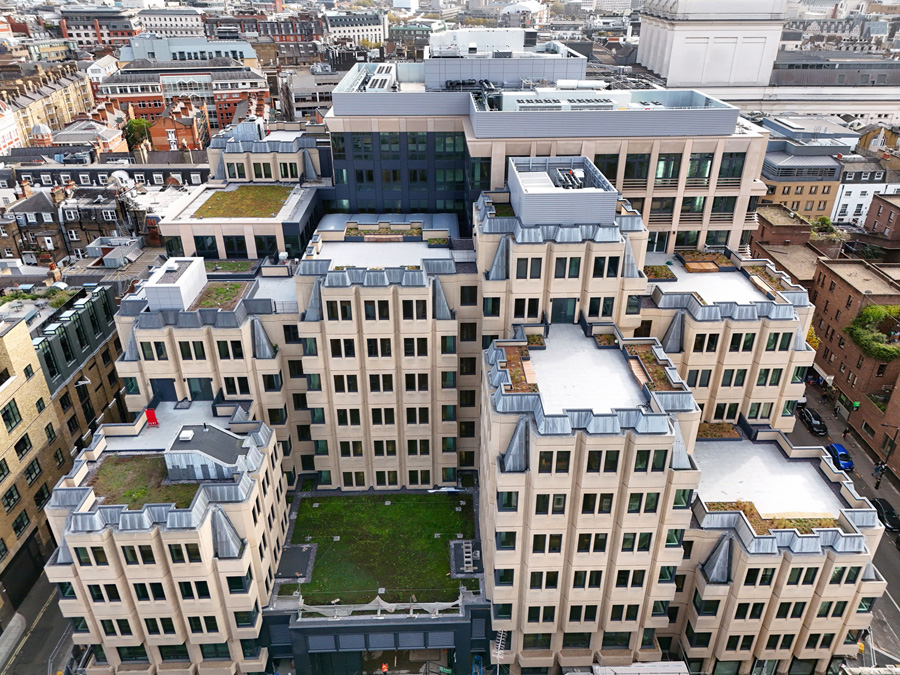
This article is an excerpt from ACO Building Drainage’s guide to blue roofs, set to be published in October. For more on blue roofs and ACO’s guide, see ACO.co.uk.
Multifunctional roofscapes across the UK are falling short of their full potential due to poor integration between blue roof attenuation and complementary roof systems. Traditional approaches that store water directly on waterproofing membranes limit the effectiveness of green, biosolar and hard-landscaped installations. Off-membrane storage systems however, as used in ACO’s method, offer superior integration that protects waterproofing while enabling controlled irrigation, supporting green landscaping, and improving biosolar installations.
Understanding blue roof integration principles
Unlike conventional approaches that store water on the roofing membrane, integrated systems store water in purpose-designed tanks positioned above the roof build-up. This separation enables controlled water distribution to planted areas, reduces membrane stress and provides predictable structural loading patterns. The approach allows green, biosolar and hard-landscaped elements to operate as coherent components rather than competing demands.
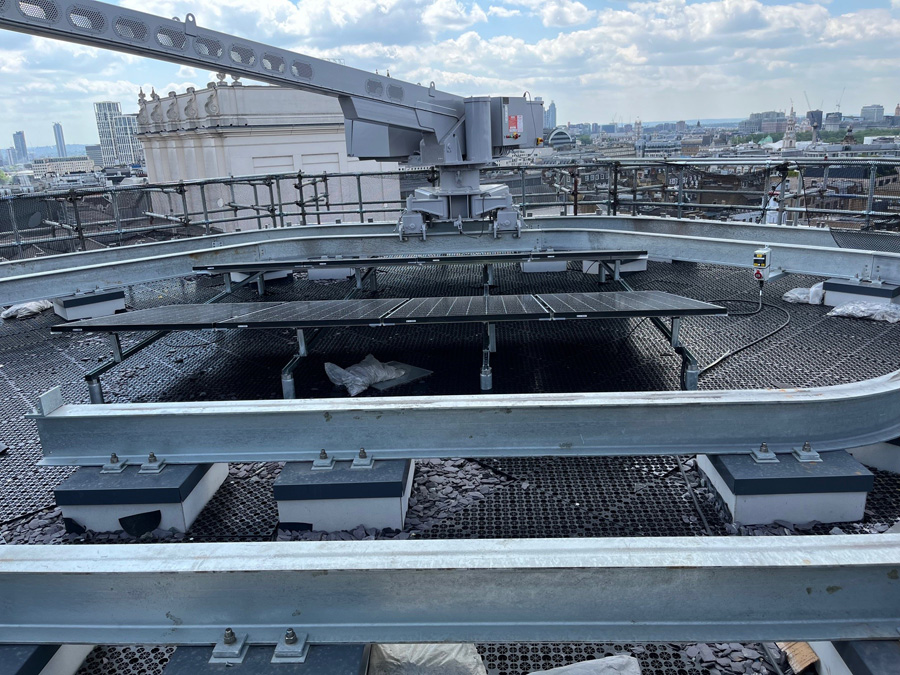
Membrane protection and warranty preservation
Off-membrane water storage eliminates surface ponding that can otherwise create persistent wet zones that accelerate membrane degradation, particularly at perimeter details and penetration points.
Typically, to ensure warranties remain intact, water has to be removed from the roof as quickly as possible. Most blue roofing methods do the exact opposite, however ACO’s method, supplied and installed by selected roofing partners keeps water off of the roof at all times. This means attenuated water is kept out of contact with the more susceptible parts of a roof buildup helping to preserve manufacturer warranties.
Passive irrigation efficiency
Capillary wicking systems connected to blue roof storage tanks deliver controlled moisture distribution without surface water retention. Wicking mats draw water into growing media, providing even irrigation to planted zones whilst keeping water away from sensitive roof details.
This passive approach supports vegetation in paved areas, enables biosolar edge planting without requiring mechanical irrigation systems. The method reduces energy consumption and maintenance requirements whilst ensuring consistent moisture availability during dry periods.
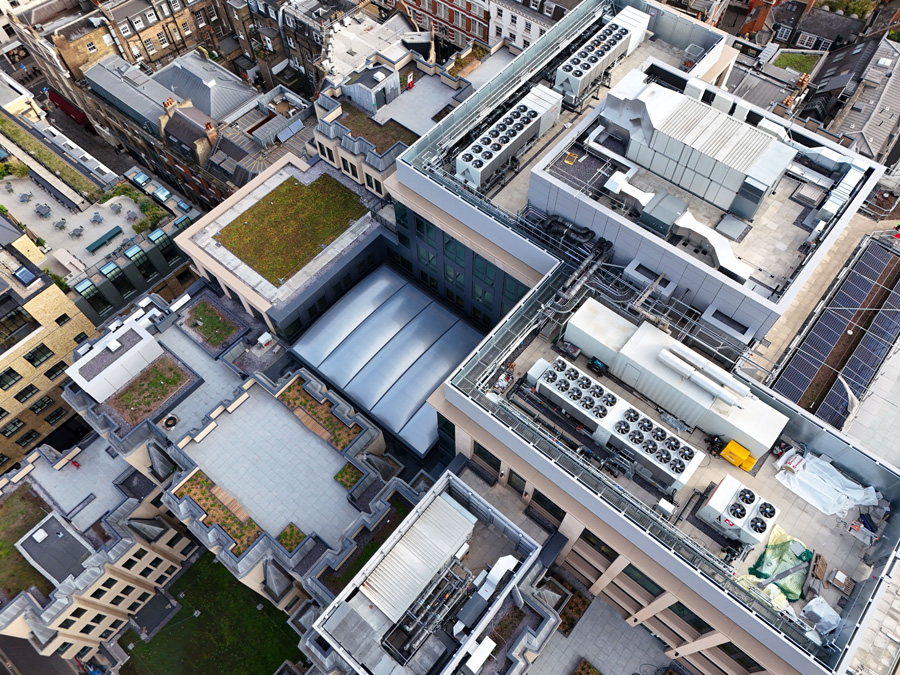
Planning, design and integration factors
Early integration of blue roof systems facilitates compliance with policies including the London Plan's Urban Greening Factor requirements. Considering water storage, wicking distribution and outlet positioning during concept stages enables designers to optimise ecological performance while avoiding late modifications that introduce structural conflicts or access problems.
ACO's system addresses the structural challenges of hard-landscaped inverted roofs by eliminating heavy ballast requirements in inverted roof build-ups. The modular tanks are positioned above insulation layers, and this prevents the risk of insulation floating. Components comply with relevant building standards and provide simplified installation compared to ballast-dependent alternatives.
Role of professionals
At the early stages of a project, the overall water management strategy should be coordinated with all relevant disciplines to ensure all benefits are maximised including landscape and solar energy to ensure water for green roof irrigation can reach all intended areas.
Construction professionals, including architects and specifiers, should treat blue roofs as system integration exercises rather than standalone features to achieve optimal multifunctional roof performance.
